
In the United States, the common law principle known as the “castle doctrine” allows individuals to use deadly force, if reasonable, to protect themselves from home intruders. Variations of the castle doctrine are the law of the land in all but a handful of states. But in recent years, a number of states have expanded on the principle, allowing individuals to use deadly force in public spaces under certain circumstances, even if they have the option to safely retreat. These statutes are commonly known as “stand your ground” or “shoot first” laws.
Unlike the castle doctrine, which is deeply rooted in historical precedent, stand your ground laws represent a meaningful departure from American legal tradition. According to gun control advocacy group Giffords Law Center, stand your ground laws increase the likelihood of avoidable violence and death — especially if firearms are involved, which, in states with these laws and weak gun control regulations, they often are.
One study in Florida found that firearm homicides rose by 32% after the state became one of the first to enact stand your ground laws in 2005. Additionally, in 79% of stand your ground cases in Florida, violent confrontations were avoidable, and in 68% of cases, the individual killed was not armed. Today, Florida is among the majority of states that have passed stand your ground policies. (Here is a look at the most pro-gun lawmakers in the U.S. Senate.)
Using data from Gifford’s Law Center, 24/7 Wall St. identified each of the 30 states with stand your ground laws. Though policy details can vary slightly by jurisdiction, in each state on this list, citizens are generally not obligated to retreat, even if they can safely do so, if they or others are threatened with the possibility of death or serious bodily harm in a public place, and are legally protected to use force to prevent the commission of a forcible felony, even with a firearm.
In the vast majority of states with stand your ground laws on the books, residents are allowed to carry firearms in public places. And in states without a legal duty to retreat from potentially dangerous public confrontations, or meaningful restrictions on firearms in public, the risk of avoidable violence and homicide increases substantially.
According to 2021 data from the Centers for Disease Control and Prevention, nine of the 10 states with the highest firearm mortality rates are on this list. And, perhaps not surprisingly, each of them does little to restrict firearms in public places. (Here is a look at the law for carrying firearms in public in every state.)
Click here to see the states with stand-your-ground laws.
Click here to see our detailed methodology.

Alabama
> Obligation to retreat from dangerous confrontations in public: No
> Open carry of handguns: Allowed
> Open carry of long guns: Allowed
> Permitless concealed carry: Legal
> Gun deaths in 2021: 26.4 per 100,000 people – 4th highest of 50 states (1315.0 total)
[in-text-ad]

Alaska
> Obligation to retreat from dangerous confrontations in public: No
> Open carry of handguns: Allowed
> Open carry of long guns: Allowed
> Permitless concealed carry: Legal
> Gun deaths in 2021: 25.2 per 100,000 people – 6th highest of 50 states (182.0 total)

Arizona
> Obligation to retreat from dangerous confrontations in public: No
> Open carry of handguns: Allowed
> Open carry of long guns: Allowed
> Permitless concealed carry: Legal
> Gun deaths in 2021: 18.3 per 100,000 people – 17th highest of 50 states (1365.0 total)
Arkansas
> Obligation to retreat from dangerous confrontations in public: No
> Open carry of handguns: Allowed
> Open carry of long guns: Allowed
> Permitless concealed carry: Legal
> Gun deaths in 2021: 23.3 per 100,000 people – 8th highest of 50 states (698.0 total)
[in-text-ad-2]

Florida
> Obligation to retreat from dangerous confrontations in public: No
> Open carry of handguns: Prohibited
> Open carry of long guns: Prohibited
> Permitless concealed carry: Legal
> Gun deaths in 2021: 14.1 per 100,000 people – 17th lowest of 50 states (3142.0 total)

Georgia
> Obligation to retreat from dangerous confrontations in public: No
> Open carry of handguns: Allowed
> Open carry of long guns: Allowed
> Permitless concealed carry: Legal
> Gun deaths in 2021: 20.3 per 100,000 people – 14th highest of 50 states (2200.0 total)
[in-text-ad]
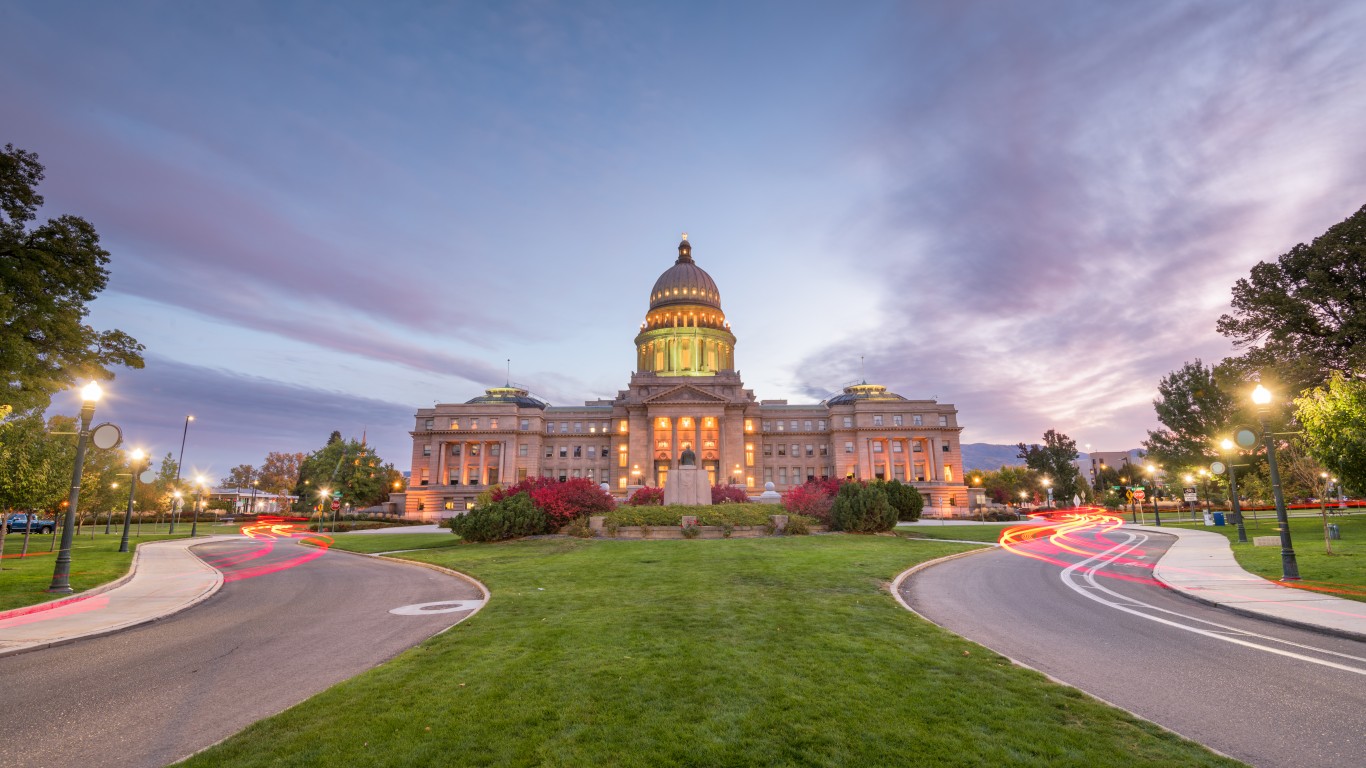
Idaho
> Obligation to retreat from dangerous confrontations in public: No
> Open carry of handguns: Allowed
> Open carry of long guns: Allowed
> Permitless concealed carry: Legal
> Gun deaths in 2021: 16.3 per 100,000 people – 25th highest of 50 states (309.0 total)

Indiana
> Obligation to retreat from dangerous confrontations in public: No
> Open carry of handguns: Permit Required
> Open carry of long guns: Allowed
> Permitless concealed carry: Legal
> Gun deaths in 2021: 18.4 per 100,000 people – 16th highest of 50 states (1251.0 total)
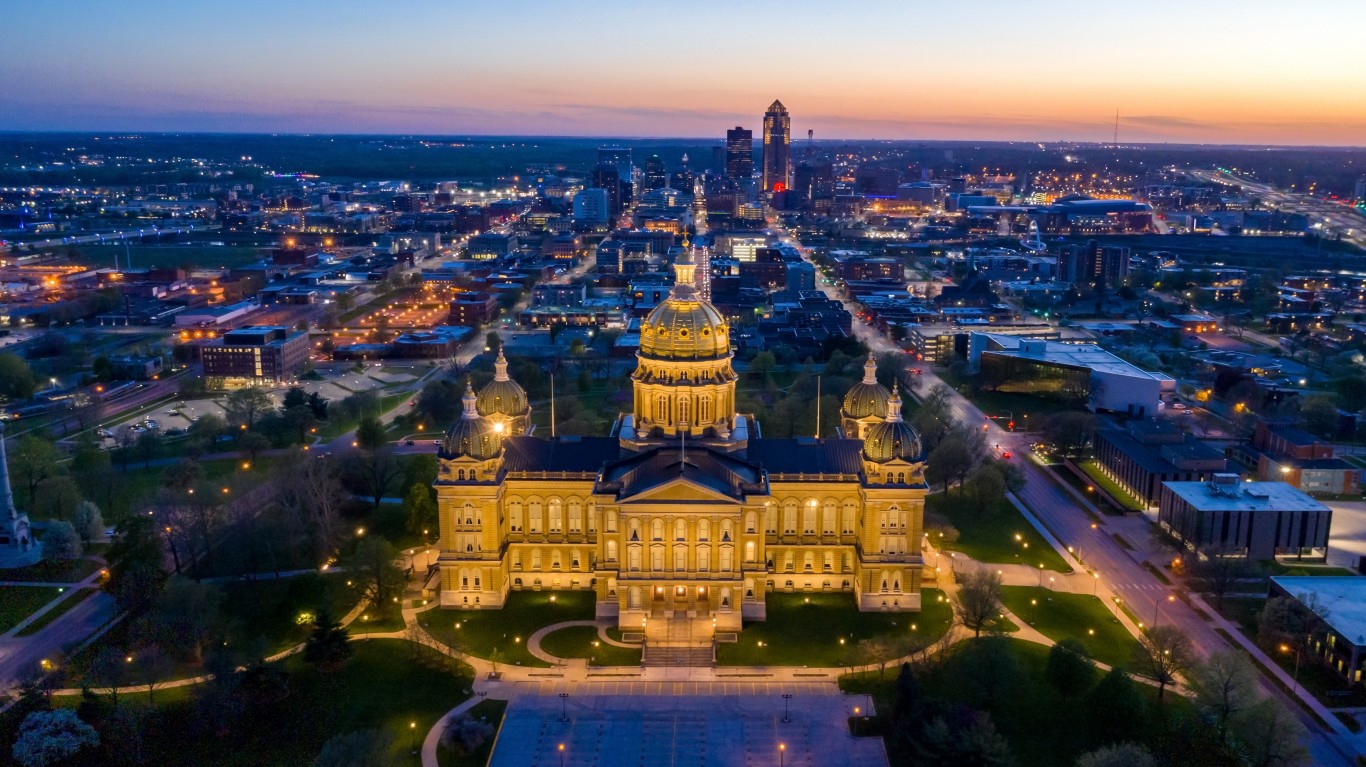
Iowa
> Obligation to retreat from dangerous confrontations in public: No
> Open carry of handguns: Allowed
> Open carry of long guns: Allowed
> Permitless concealed carry: Legal
> Gun deaths in 2021: 11.2 per 100,000 people – 11th lowest of 50 states (364.0 total)
[in-text-ad-2]
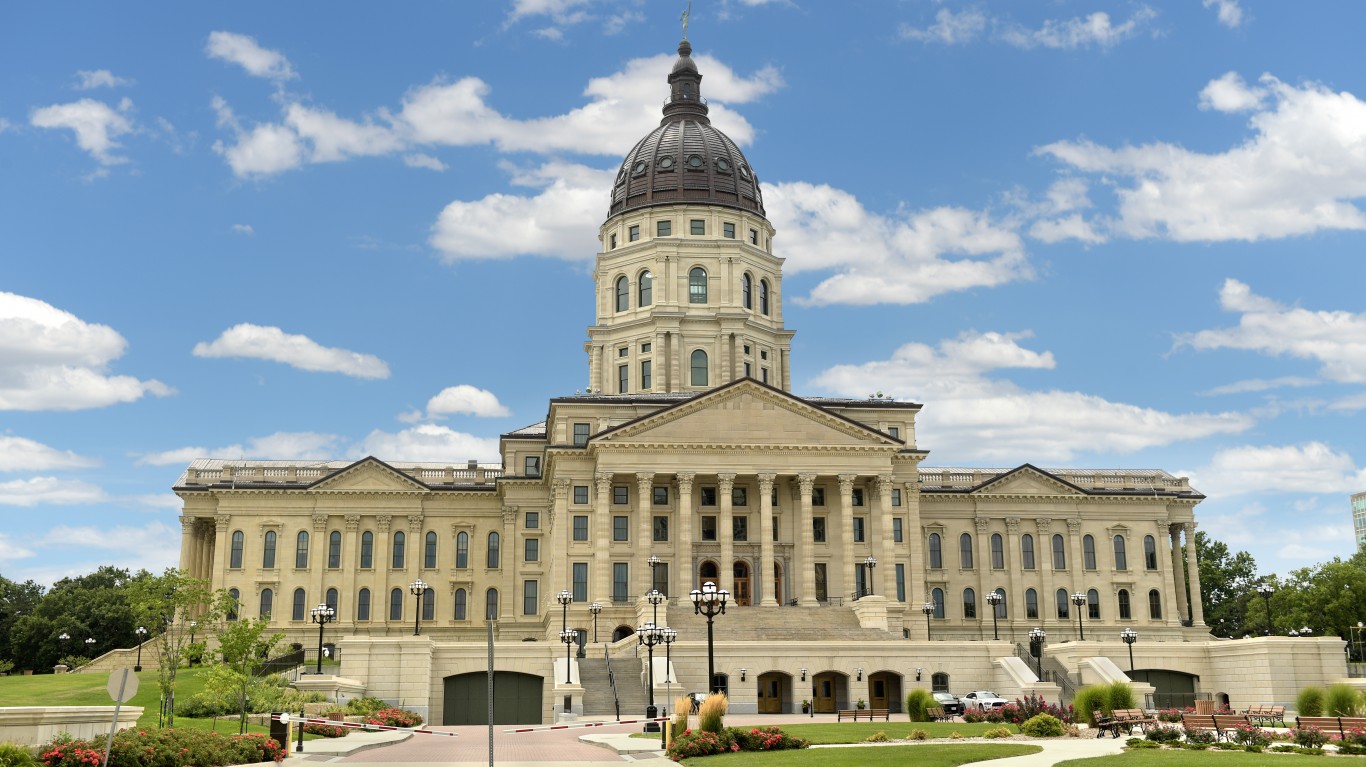
Kansas
> Obligation to retreat from dangerous confrontations in public: No
> Open carry of handguns: Allowed
> Open carry of long guns: Allowed
> Permitless concealed carry: Legal
> Gun deaths in 2021: 17.3 per 100,000 people – 21st highest of 50 states (503.0 total)

Kentucky
> Obligation to retreat from dangerous confrontations in public: No
> Open carry of handguns: Allowed
> Open carry of long guns: Allowed
> Permitless concealed carry: Legal
> Gun deaths in 2021: 21.1 per 100,000 people – 13th highest of 50 states (947.0 total)
[in-text-ad]

Louisiana
> Obligation to retreat from dangerous confrontations in public: No
> Open carry of handguns: Allowed
> Open carry of long guns: Allowed
> Permitless concealed carry: Legal for residents with military service only
> Gun deaths in 2021: 29.1 per 100,000 people – 2nd highest of 50 states (1314.0 total)

Michigan
> Obligation to retreat from dangerous confrontations in public: No
> Open carry of handguns: Allowed
> Open carry of long guns: Allowed
> Permitless concealed carry: Illegal
> Gun deaths in 2021: 15.4 per 100,000 people – 23rd lowest of 50 states (1544.0 total)

Mississippi
> Obligation to retreat from dangerous confrontations in public: No
> Open carry of handguns: Allowed
> Open carry of long guns: Allowed
> Permitless concealed carry: Legal
> Gun deaths in 2021: 33.9 per 100,000 people – the highest of 50 states (962.0 total)
[in-text-ad-2]

Missouri
> Obligation to retreat from dangerous confrontations in public: No
> Open carry of handguns: Allowed
> Open carry of long guns: Allowed
> Permitless concealed carry: Legal
> Gun deaths in 2021: 23.2 per 100,000 people – 9th highest of 50 states (1414.0 total)

Montana
> Obligation to retreat from dangerous confrontations in public: No
> Open carry of handguns: Allowed
> Open carry of long guns: Allowed
> Permitless concealed carry: Legal
> Gun deaths in 2021: 25.1 per 100,000 people – 7th highest of 50 states (280.0 total)
[in-text-ad]

Nevada
> Obligation to retreat from dangerous confrontations in public: No
> Open carry of handguns: Allowed
> Open carry of long guns: Allowed
> Permitless concealed carry: Illegal
> Gun deaths in 2021: 19.8 per 100,000 people – 15th highest of 50 states (633.0 total)

New Hampshire
> Obligation to retreat from dangerous confrontations in public: No
> Open carry of handguns: Allowed
> Open carry of long guns: Allowed
> Permitless concealed carry: Legal
> Gun deaths in 2021: 8.3 per 100,000 people – 7th lowest of 50 states (123.0 total)

North Carolina
> Obligation to retreat from dangerous confrontations in public: No
> Open carry of handguns: Allowed
> Open carry of long guns: Allowed
> Permitless concealed carry: Illegal
> Gun deaths in 2021: 17.3 per 100,000 people – 20th highest of 50 states (1839.0 total)
[in-text-ad-2]

North Dakota
> Obligation to retreat from dangerous confrontations in public: No
> Open carry of handguns: Allowed
> Open carry of long guns: Allowed
> Permitless concealed carry: Legal
> Gun deaths in 2021: 16.8 per 100,000 people – 22nd highest of 50 states (128.0 total)

Ohio
> Obligation to retreat from dangerous confrontations in public: No
> Open carry of handguns: Allowed
> Open carry of long guns: Allowed
> Permitless concealed carry: Legal
> Gun deaths in 2021: 16.5 per 100,000 people – 24th highest of 50 states (1911.0 total)
[in-text-ad]
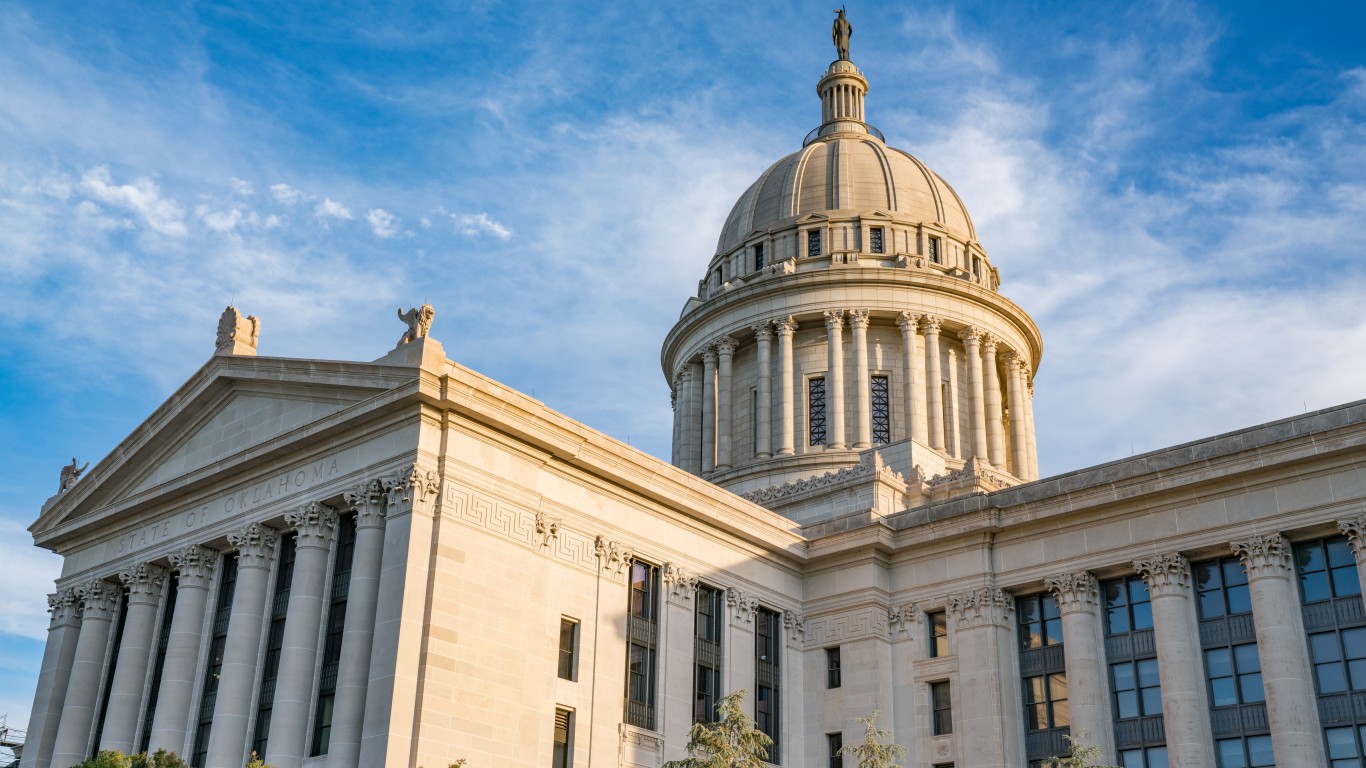
Oklahoma
> Obligation to retreat from dangerous confrontations in public: No
> Open carry of handguns: Allowed
> Open carry of long guns: Allowed
> Permitless concealed carry: Legal
> Gun deaths in 2021: 21.2 per 100,000 people – 12th highest of 50 states (836.0 total)
Pennsylvania
> Obligation to retreat from dangerous confrontations in public: No
> Open carry of handguns: Allowed
> Open carry of long guns: Allowed
> Permitless concealed carry: Illegal
> Gun deaths in 2021: 14.8 per 100,000 people – 20th lowest of 50 states (1905.0 total)

South Carolina
> Obligation to retreat from dangerous confrontations in public: No
> Open carry of handguns: Permit Required
> Open carry of long guns: Allowed
> Permitless concealed carry: Illegal
> Gun deaths in 2021: 22.4 per 100,000 people – 11th highest of 50 states (1136.0 total)
[in-text-ad-2]
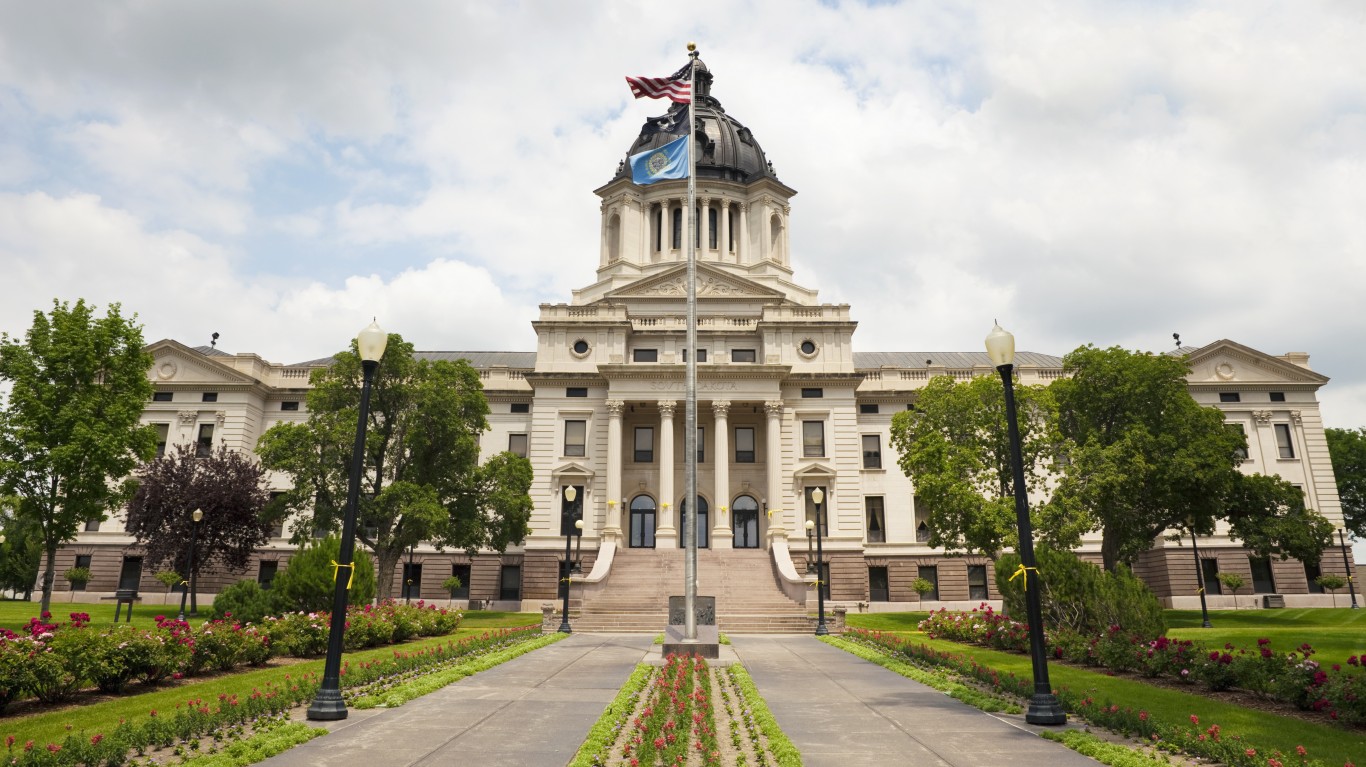
South Dakota
> Obligation to retreat from dangerous confrontations in public: No
> Open carry of handguns: Allowed
> Open carry of long guns: Allowed
> Permitless concealed carry: Legal
> Gun deaths in 2021: 14.3 per 100,000 people – 18th lowest of 50 states (128.0 total)

Tennessee
> Obligation to retreat from dangerous confrontations in public: No
> Open carry of handguns: Allowed
> Open carry of long guns: Allowed
> Permitless concealed carry: Legal
> Gun deaths in 2021: 22.8 per 100,000 people – 10th highest of 50 states (1569.0 total)
[in-text-ad]
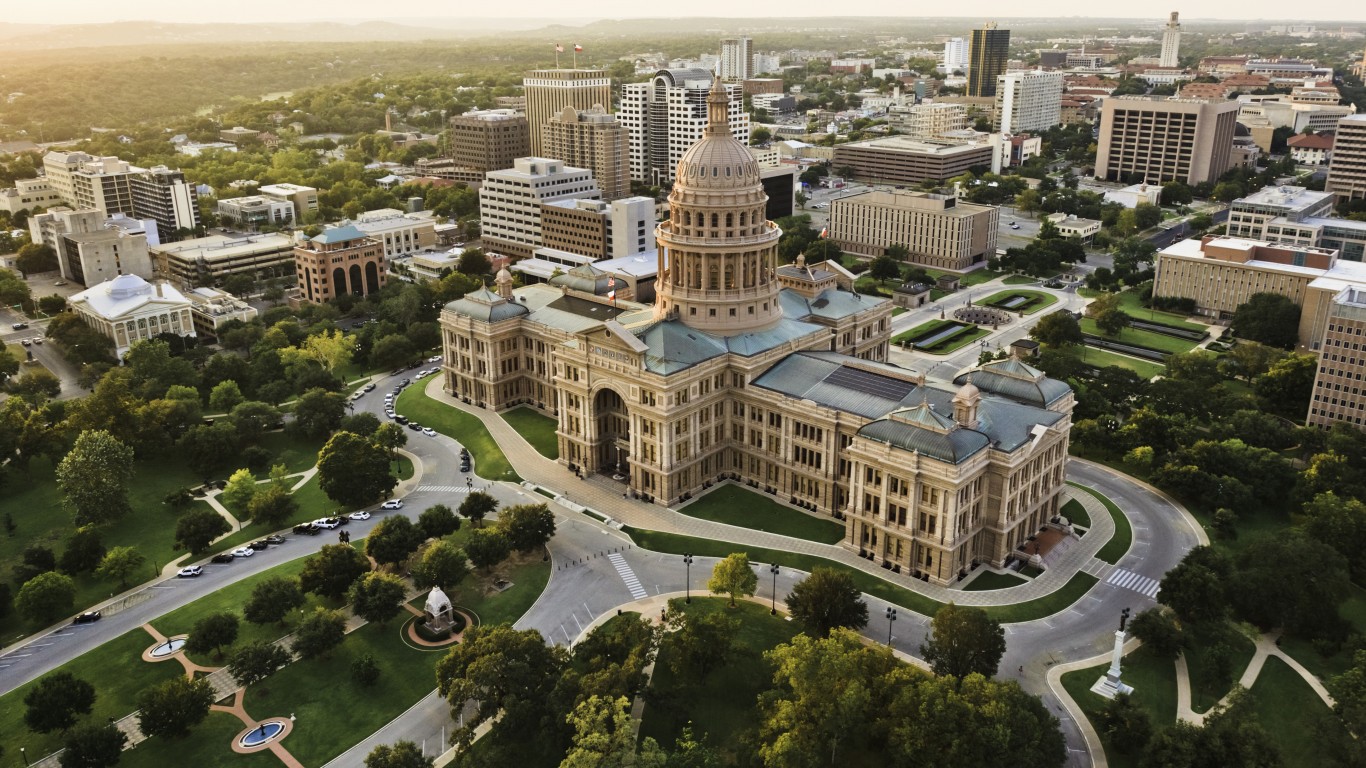
Texas
> Obligation to retreat from dangerous confrontations in public: No
> Open carry of handguns: Allowed
> Open carry of long guns: Allowed
> Permitless concealed carry: Legal
> Gun deaths in 2021: 15.6 per 100,000 people – 24th lowest of 50 states (4613.0 total)
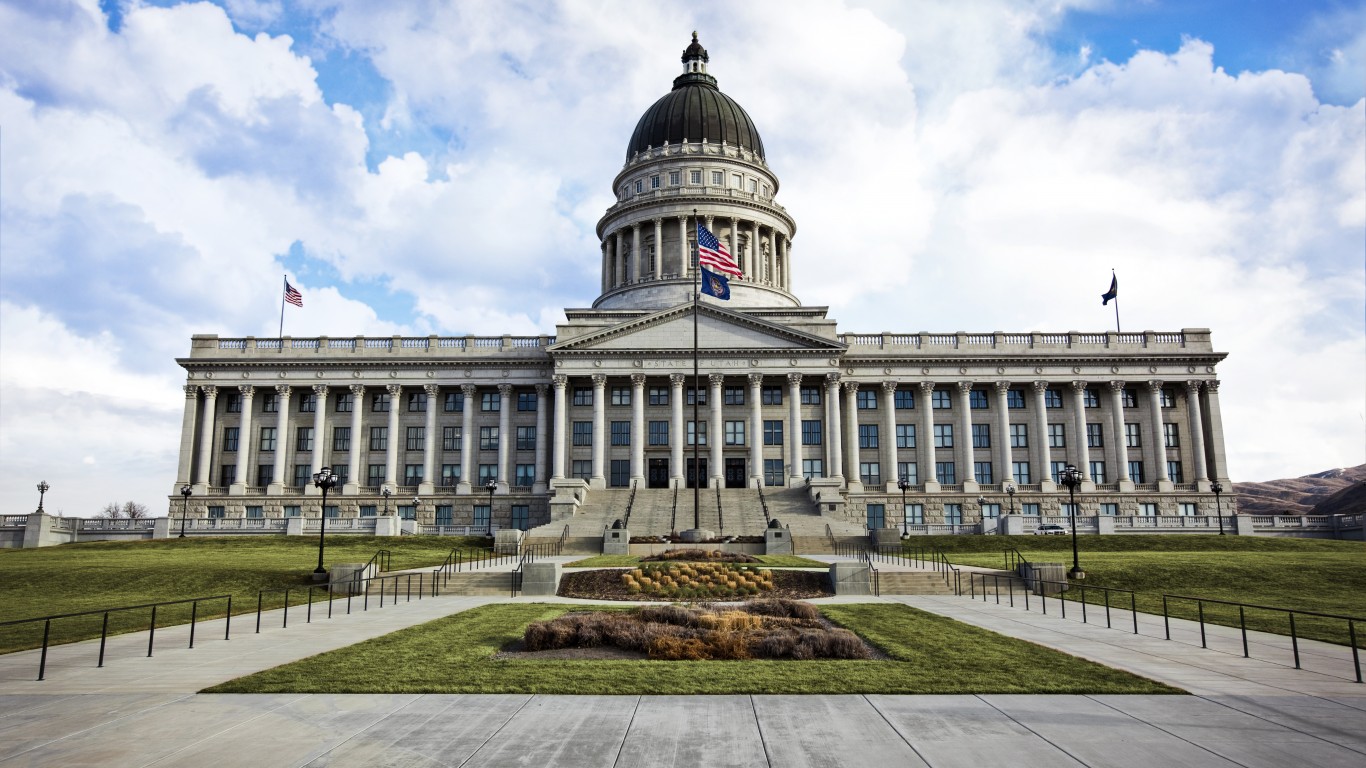
Utah
> Obligation to retreat from dangerous confrontations in public: No
> Open carry of handguns: Allowed
> Open carry of long guns: Allowed
> Permitless concealed carry: Legal
> Gun deaths in 2021: 13.9 per 100,000 people – 16th lowest of 50 states (450.0 total)

West Virginia
> Obligation to retreat from dangerous confrontations in public: No
> Open carry of handguns: Allowed
> Open carry of long guns: Allowed
> Permitless concealed carry: Legal
> Gun deaths in 2021: 17.3 per 100,000 people – 19th highest of 50 states (319.0 total)
[in-text-ad-2]
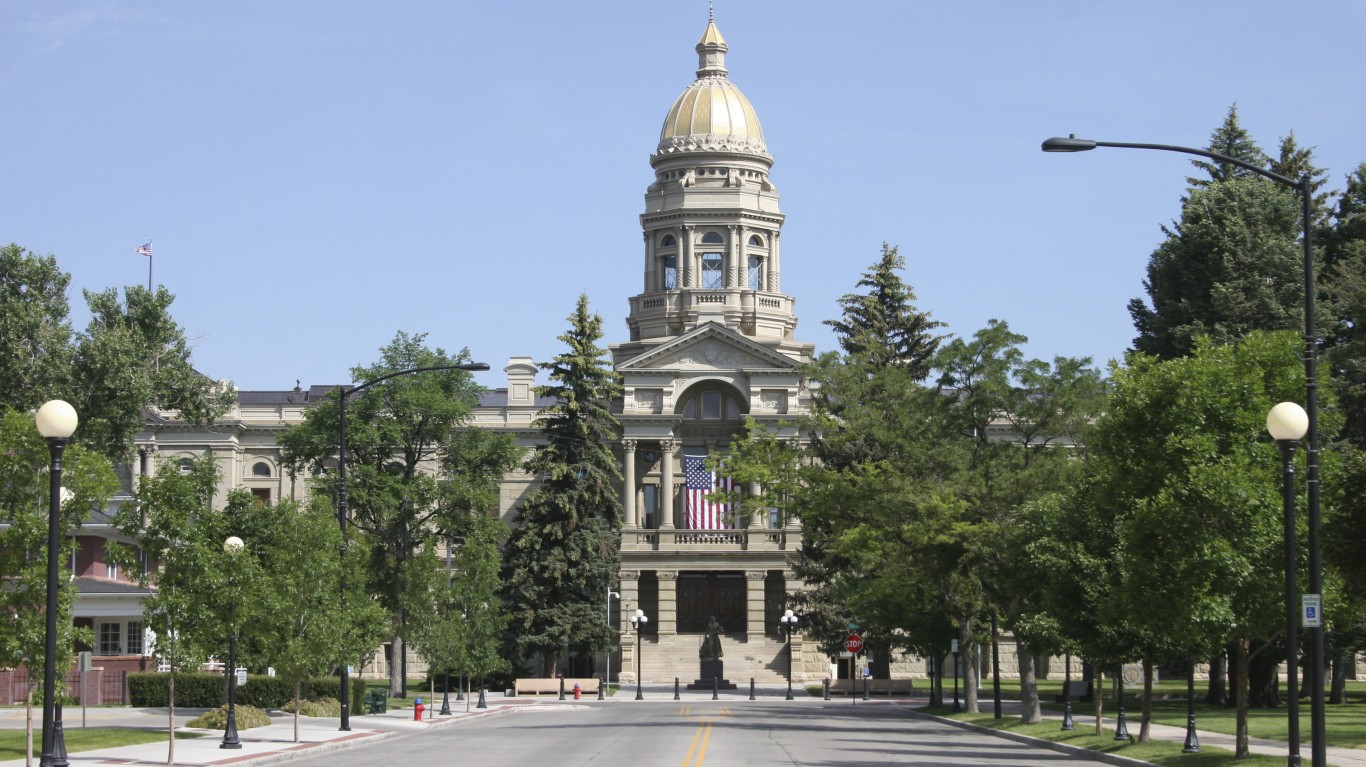
Wyoming
> Obligation to retreat from dangerous confrontations in public: No
> Open carry of handguns: Allowed
> Open carry of long guns: Allowed
> Permitless concealed carry: Legal
> Gun deaths in 2021: 26.1 per 100,000 people – 5th highest of 50 states (155.0 total)
Methodology
To identify the states with stand your ground laws, 24/7 Wall St. reviewed state-level laws compiled by Gifford’s Law Center, a gun control advocacy group. So called “stand your ground” laws remove the obligation of citizens to retreat, when possible, if they or others are threatened with the possibility of death or serious bodily harm in a public place, and are legally protected to use force to prevent the commission of a forcible felony, even with a firearm. Each of the 30 states on this list, arranged in alphabetical order, has stand your ground laws, also commonly known as shoot first laws.
We did not include the eight states with stand your ground protections decided by legal precedent, as in these states, an individual who uses deadly force to protect themselves or others in public when retreat was possible can still be subject to criminal prosecution.
Supplemental data on open and concealed carry firearm laws in each state are also from the Giffords Law Center. Open carry of firearms is generally defined as wielding a firearm that is either partially or fully visible, though precise definitions can vary by jurisdiction and different rules can apply for different firearm types, such as handguns, or long guns, like rifles and shotguns.
Concealed carry of firearms is generally defined as having a gun on one’s person while in public that is not visible. Concealed carry firearms can be carried in backpacks, purses, or in a holster under a garment.
In addition, we also reviewed state-level firearm mortality data from the Centers for Disease Control and Prevention for 2021.
Take Charge of Your Retirement In Just A Few Minutes (Sponsor)
Retirement planning doesn’t have to feel overwhelming. The key is finding expert guidance—and SmartAsset’s made it easier than ever for you to connect with a vetted financial advisor.
Here’s how it works:
- Answer a Few Simple Questions. Tell us a bit about your goals and preferences—it only takes a few minutes!
- Get Matched with Vetted Advisors Our smart tool matches you with up to three pre-screened, vetted advisors who serve your area and are held to a fiduciary standard to act in your best interests. Click here to begin
- Choose Your Fit Review their profiles, schedule an introductory call (or meet in person), and select the advisor who feel is right for you.
Why wait? Start building the retirement you’ve always dreamed of. Click here to get started today!
Thank you for reading! Have some feedback for us?
Contact the 24/7 Wall St. editorial team.
 24/7 Wall St.
24/7 Wall St.
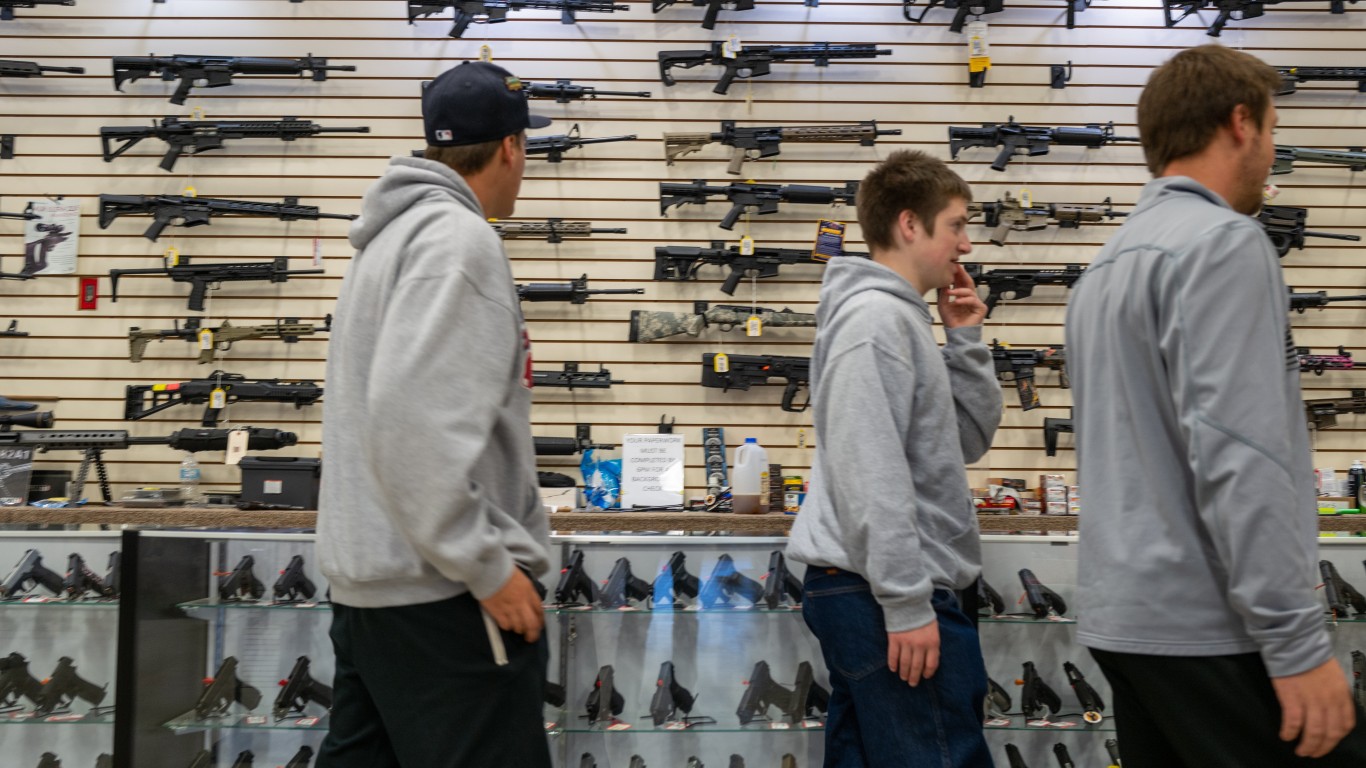 24/7 Wall St.
24/7 Wall St. 24/7 Wall St.
24/7 Wall St.



